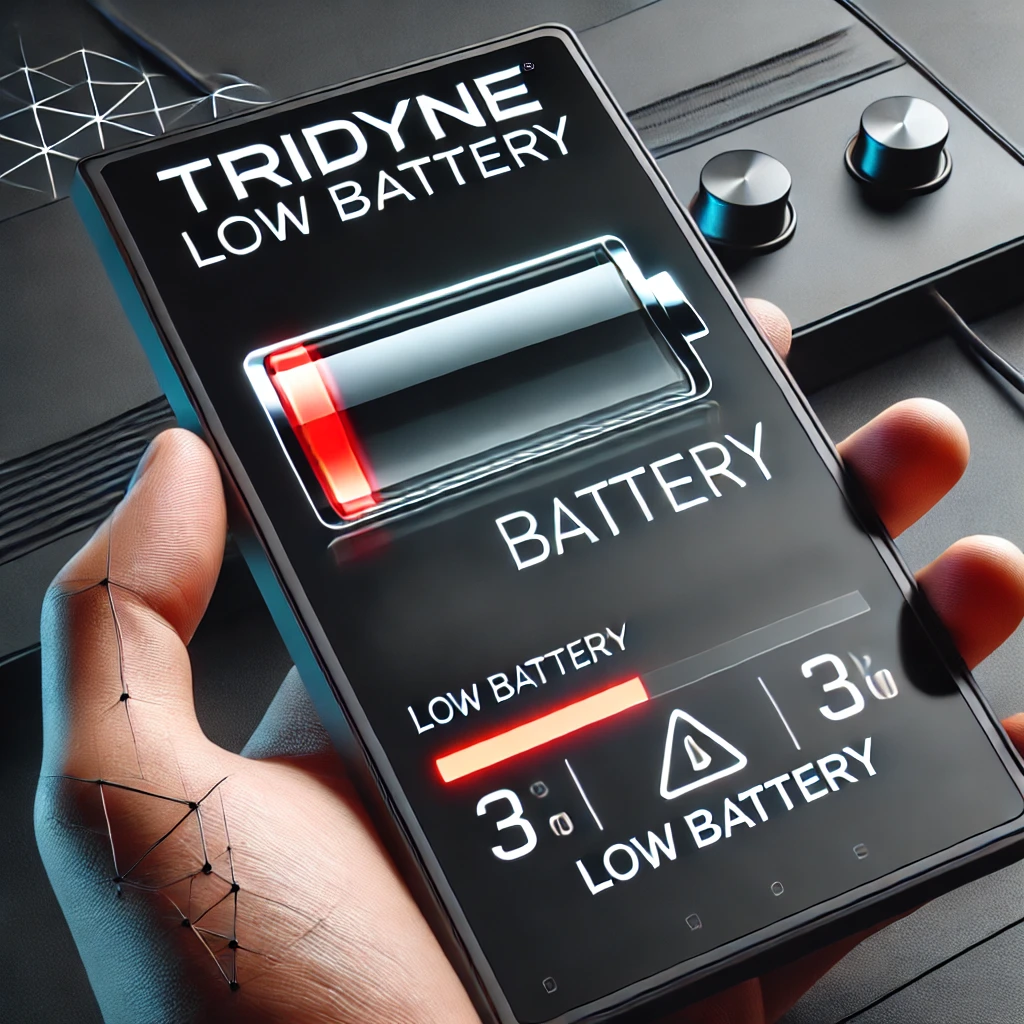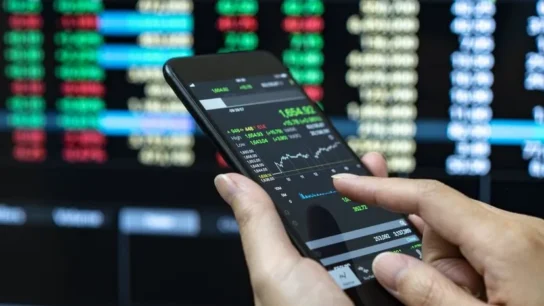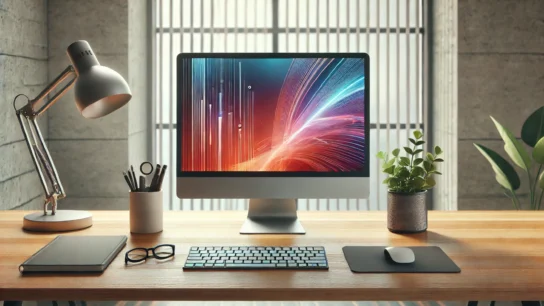In today’s technology-driven world, it’s essential to have devices that run smoothly without interruptions. Tribune, a prominent brand recognized for its advanced systems, is no exception. However, one of the most common issues that Tridyne users face is the dreaded “Tridyne low battery” notification. This issue can disrupt productivity, halt critical processes, and even cause device malfunctions if not addressed promptly.
Understanding why your Tridyne device shows low battery alerts and knowing how to fix the problem can save you time, improve device performance, and prevent the frustration of sudden shutdowns. In this article, we’ll explore the causes behind Tridyne’s low battery alerts and provide practical solutions for fixing and preventing the issue.
What Does “Tridyne Low Battery” Mean?
A “low battery” warning on a Tridyne device typically means that the battery’s power level is dangerously low and needs to be recharged or replaced. When a Tridyne system shows this alert, the battery is running out of charge, and continued use could result in the device shutting down, freezing, or malfunctioning. This is particularly problematic for critical systems such as surveillance equipment, medical devices, and industrial machinery where uninterrupted operation is required.
It’s important to address the Tridyne battery warning alert promptly, as failing to do so can lead to reduced performance, data loss, or even hardware failure. But before we dive into the fixes, let’s explore some of the reasons why your Tridyne device might be showing low battery alerts in the first place.
Common Causes of Tridyne Battery Warning
Understanding the causes of a Tridyne low battery issue is the first step in resolving it. Below are some of the most frequent causes that may lead to this issue.
1. Frequent Use and Increased Load
Devices like those from Tridyne, particularly in industrial and commercial applications, often handle heavy workloads or run continuously. When your Tridyne device is frequently used or placed under high load, the battery can quickly deplete, leading to a low battery alert.
2. Aging Battery
All rechargeable batteries experience a gradual decline in their ability to hold a charge over time. If your Tridyne device is old, the battery may have become less efficient. After many charging cycles, the battery’s capacity diminishes, resulting in frequent low battery warnings.
3. Faulty Charging System
Sometimes, the issue might not be with the battery itself but with the charging system. A faulty charging cable, damaged port, or malfunctioning charger can prevent your Tridyne device from charging properly, even if it’s plugged in. As a result, the device will display a low battery warning even though it isn’t receiving sufficient power.
4. Extreme Temperature Conditions
Tridyne devices exposed to extreme temperatures, either too hot or too cold, can experience problems with battery performance. Temperature fluctuations can cause the battery to drain faster or produce inaccurate low battery alerts. Devices operating in harsh environments are more susceptible to this issue.
5. Background Processes Consuming Power
Many devices, including those from Tridyne, often have background processes running that consume power even when you’re not actively using them. Features like Wi-Fi, Bluetooth, or GPS can continue to drain the battery, contributing to a low battery warning.
6. Poor Battery Maintenance
Improper charging and battery maintenance can also contribute to the Tridyne low battery issue. If the battery is overcharged, undercharged, or left in a depleted state for extended periods, it can significantly reduce the battery’s lifespan and efficiency.
How to Fix Tridyne Low Battery Issues
Now that we understand the common causes of a Tridyne low battery problem, let’s explore the steps you can take to fix the issue and prevent it from recurring.
1. Ensure Proper Charging Practices
The most immediate step to take when facing a low battery issue is to ensure that your device is being charged correctly. Follow these charging practices to optimize battery life:
Use the Correct Charger
Always use the charger that came with your Tridyne device or one that is approved by the manufacturer. Using an incompatible charger may result in inefficient charging or even damage the device or battery.
Avoid Overcharging
Even though most modern devices come with built-in overcharge protection, it’s still advisable to disconnect your device once it hits 100% to preserve battery health. Continuous overcharging can reduce the overall lifespan of the battery.
Charge Regularly
Avoid waiting for the battery to fully deplete before recharging it. It’s better to charge your device when it reaches around 20-30% capacity. Keeping your battery between 20% and 80% is ideal for preserving battery health.
2. Replace the Battery
If your Tridyne device is older, the battery may have reached the end of its useful life. In such cases, replacing the battery with a new, high-quality one will likely resolve the low battery issue.
Check your device’s user manual or the manufacturer’s website for instructions on how to replace the battery. You can also visit an authorized service center to have the battery replaced by professionals.
3. Inspect and Repair the Charging System
If the problem isn’t with the battery but with the charging system, there are a few things you can check:
Check the Charging Cable and Port
Examine the charging cable and charging port for any signs of damage. Over time, cables can fray, and ports can accumulate dust or debris, preventing proper connection. If you notice any issues, try using a different charging cable or cleaning the port with a soft brush or compressed air.
Test the Power Source
Sometimes the issue could be with the power outlet or power strip. Plug your charger into a different outlet to ensure the power source is functioning correctly.
Try a Different Charger
If you suspect that your charger is malfunctioning, try using a different charger that matches the specifications of your Tridyne device. Using a faulty charger can prevent the device from receiving a full charge, even if the cable and port are in good condition.
4. Optimize Battery Usage
To extend the battery life of your Tridyne device and reduce the frequency of low battery alerts, you can optimize its power consumption:
Disable Unnecessary Features
Turn off features like Bluetooth, Wi-Fi, GPS, or any other connectivity options when you’re not using them. These features can continue to consume battery power in the background.
Close Unused Applications
Close any applications running in the background that are not in use. These apps can consume valuable battery resources, leading to quicker depletion of the battery.
Lower Screen Brightness
If your Tridyne device has a screen, reduce the brightness to extend battery life. High screen brightness is one of the most power-draining features on a device.
5. Control Temperature
Temperature can significantly affect battery performance. To prevent temperature-related issues, make sure your device operates within the manufacturer’s recommended temperature range. Avoid leaving your device in direct sunlight, near heat sources, or in excessively cold environments.
If you’re using a Tridyne device in extreme conditions, consider purchasing a protective case that offers temperature regulation or additional insulation.
6. Perform a Battery Calibration
Battery calibration can sometimes solve issues where the device incorrectly shows low battery alerts. To calibrate the battery, follow these steps:
- Charge the device to 100%.
- Let the battery drain until the device shuts off.
- Recharge the device back to 100% without interruptions.
This process helps recalibrate the battery sensor, providing more accurate battery readings in the future.
Preventive Measures to Avoid Tridyne Low Battery Issues
In addition to fixing the problem when it occurs, there are several preventive measures you can take to avoid encountering low battery issues in the future.
1. Regularly Monitor Battery Health
Most Tridyne devices provide an option to monitor battery health. Keep an eye on the health of your device’s battery and check for any alerts or warnings. If the battery’s health is deteriorating, consider replacing it before it becomes a bigger issue.
2. Keep Software and Firmware Updated
Ensure that your Tridyne device is always running the latest software or firmware. Manufacturers often release updates that include improvements to battery management, bug fixes, and optimizations that can prevent low battery issues.
3. Use Power-Saving Modes
Many Tridyne devices come with built-in power-saving modes that reduce the device’s energy consumption. Use these modes whenever you need to extend the battery life, especially when you’re not actively using the device.
4. Follow Battery Maintenance Guidelines
Always follow the battery maintenance guidelines provided by Tridyne. This includes proper charging techniques, storing the device in a cool and dry place, and avoiding overcharging or letting the battery drain completely.
Conclusion
The Tridyne low battery issue is a common problem that can disrupt the performance of your device, especially when used in critical applications. By understanding the root causes of the issue and following the steps outlined in this article, you can easily address the problem and prevent it from recurring.
Whether you need to replace an aging battery, optimize your device’s power settings, or repair a faulty charging system, there are plenty of solutions available. Regular maintenance, proper charging practices, and a proactive approach can help keep your Tridyne device running smoothly and prevent low battery alerts from causing unnecessary downtime.
Samsung MX-HS8500/A Interferencia Troubleshooting Tips and Optimization Strategies



